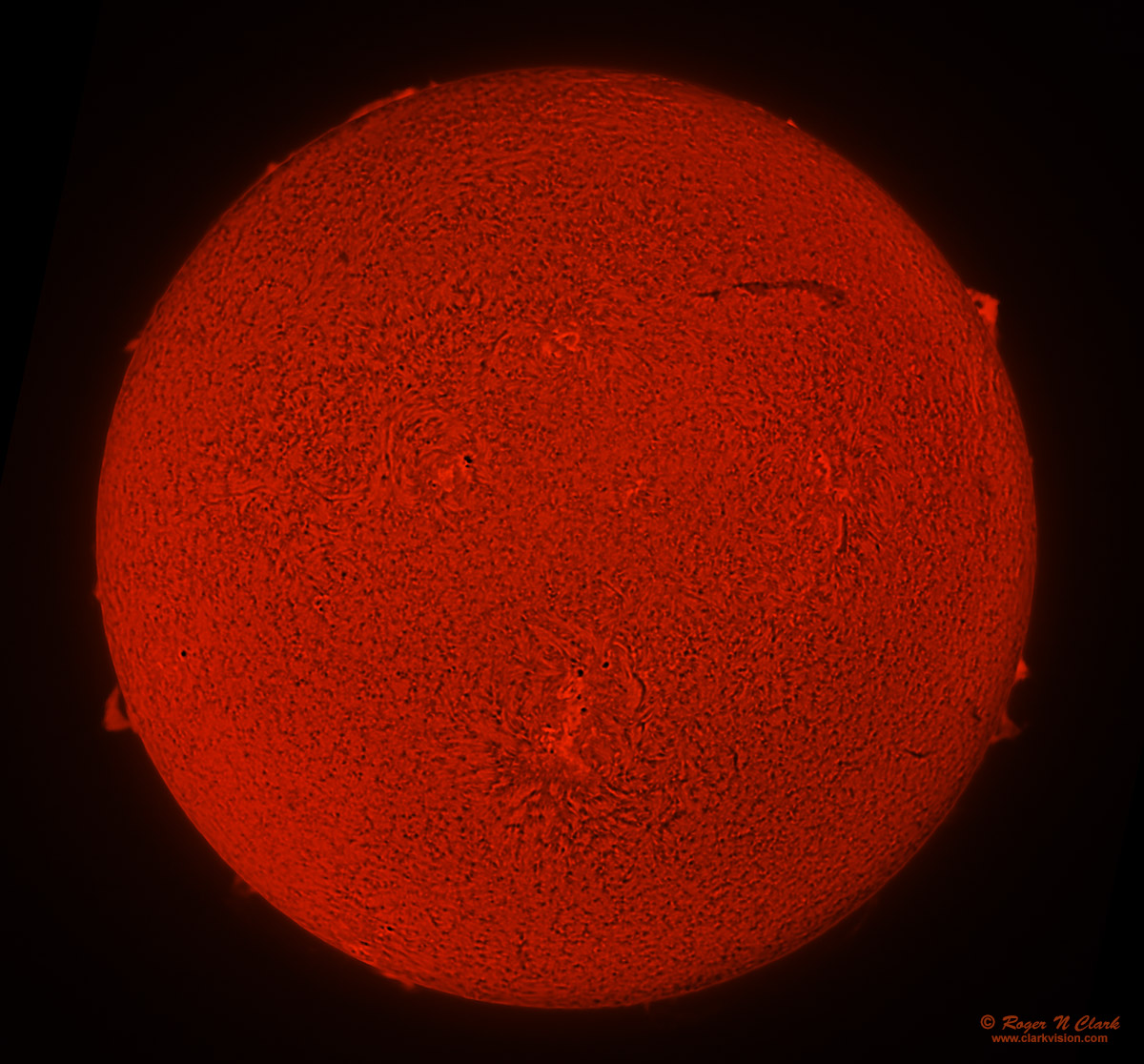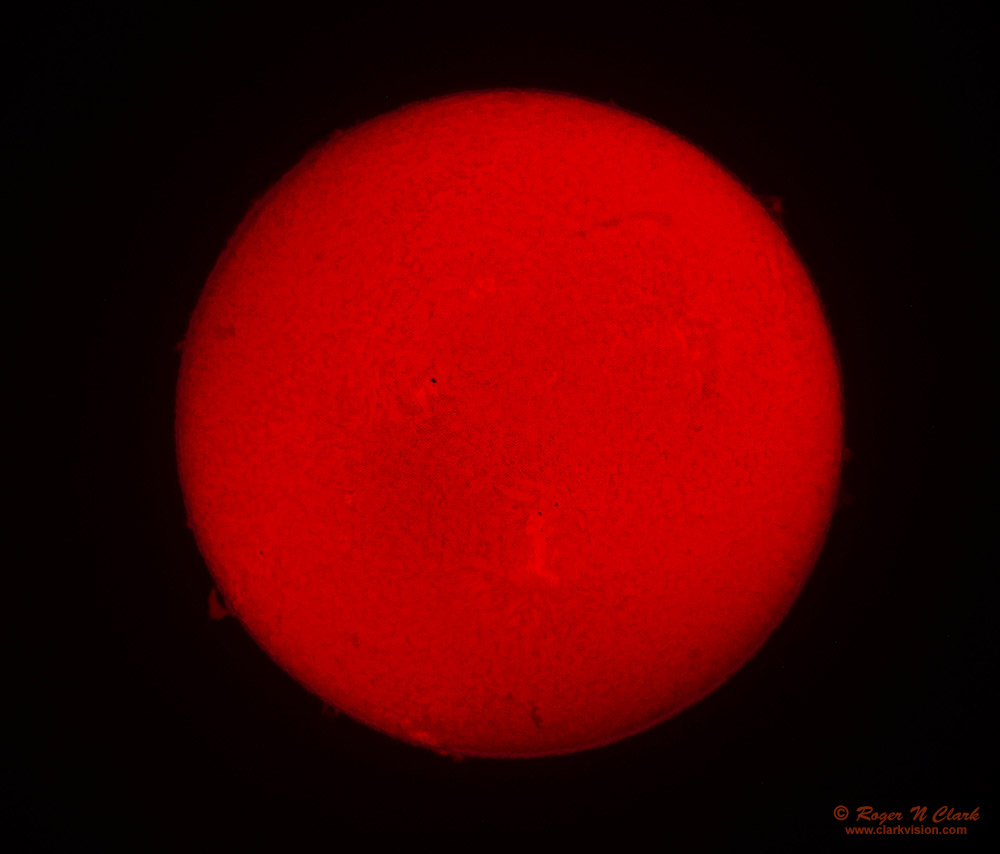| Home | Galleries | Articles | Reviews | Best Gear | New | About | Contact | Gallery Index | Previous |
Next |

| Home | Galleries | Articles | Reviews | Best Gear | New | About | Contact | Gallery Index | Previous |
Next |

The Sun shines at many wavelengths from many processes. This image shows the light emitted at a wavelength of 656.3 nm using a narrow band filter with a bandpass less than about 0.05 nm. This wavelength shows fine structure on the solar disk as well as solar prominences, which can only be seen with such narrow band filters and during a total solar eclipse.
Technical. The image was obtained with a stock Canon EOS R5 Mirrorless Digital Camera and Canon 100-400 L IS zoom lens at about 270 mm plus a Daystar Camera Quark Hydrogen Alpha Chromosphere filter plus an energy rejection filter (for safety). The Sun was recorded with 4K video for about 65 seconds. Exposure was 1/125 second and recorded at 60 frames per second. Processed in PlanetarySystemStacker lucky imaging, where the best 76 frames out of 3800 frames were combined to produce this image. PlanetarySystemStacker reads the mp4 camera file with no conversions needed. The Daystar has a built-in 4x Barlow lens, so the focal length was 1080, and with a 54 mm aperture, was at f/20. Next, the Richardson-Lucy image deconvolution in ImagesPlus was used to sharpen the image. With the full frame Canon R5 and the output of PlanetarySystemStacker, the plate scale was about 1/2 arc-second per pixel. Seeing was 4+ arc-seconds. The image here is shown at 1.81 arc-seconds / pixel.
The full frame Canon R5 was in 4K SDR crop mode, 8-bits per pixel recording color calibrated BT.709 color space. Average bit rate was 231.9 megabits per second. Pixel size in crop mode with a 22.5 mm wide sensor was 22500 / 3840 = 5.86 microns. The Daystar has a built-in 4x Barlow lens, so the focal length was 1080 mm, and with a 54 mm aperture, was at f/20. Pixel scale of 1.1 arc-seconds per pixel. The Dawes resolution limit for a 54 mm lens at H-alpha is 3.06 arc-seconds. The guide for lucky imaging video is 5x the pixel size for mid-visible (about 530 nm), but about 4x for 656 nm H-alpha, so 5.85 * 4 = f/23, thus f20 is close to optimum. The image resolution is limited by the 4-arc-second seeing.

To learn how to obtain stunning images like this, please visit my Extensive Articles on Photography .
Keywords to this image = astrophoto-1 the_sun H-alpha digital_astro canon_r5
Image ID: sun-h-alpha-2023-04-11-4C3A7867-h-1200s.jpg
| Home | Galleries | Articles | Reviews | Best Gear | Science | New | About | Contact |
Last updated November 03, 2025